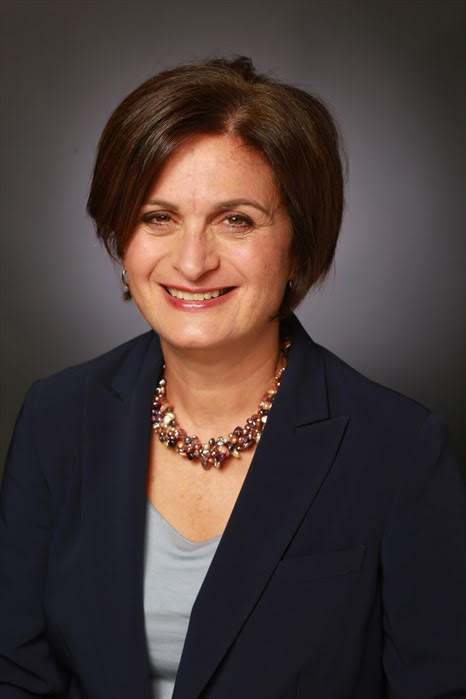DAA Is Slow to Roll Out — But That’s Normal
Momentum has been building for some time for the Distributed Access Architecture (DAA) and 2019 was expected to be the year it would start to scale in the market. This technology is expected to transform cable operators’ infrastructure to remediate the limitations caused by bandwidth capacity increases and to enable them to offer competitive services. However, the reality is quite different.

To date, the real field deployments of DAA are few and far between, and in the 4Q 2018 earnings calls, many vendors spoke of a temporary pause. What is going on?
The reality is that the market is in the process of crossing the proverbial chasm from hype to reality, from early adopters to mainstream adoption. This process is always difficult, but it is even more complicated in this case given the far-reaching implications of the DAA for operators’ networks and operating environments.
Some of the challenges with which operators are grappling:
• Immature specifications: DAA specifications, notably Remote-PHY (Remote-MACPHY specs are still in development), are recent; despite the tremendous effort the industry has put in developing them, no spec is ever comprehensive from day one, and as operators are going through their comprehensive test cycles, issues are being identified and addressed. This is time-consuming.
• Interoperability: The industry has been working diligently on interoperability, for example, with CableLabs’s Plugfests. But more remains to be done. With any new specification there is often room for interpretation by vendors, which creates incompatibility and can hamper interoperability. It’s not a coincidence that early field deployments of DAA (of note is the Stofa recent field introduction) were largely based on one vendor’s solutions (in this case Arris). To its credit, the industry remains committed to interoperability and CableLabs continues to play a major role in this extensive undertaking.
• Need to support existing services: The DAA is profoundly different from the integrated architecture, and yet it has to support all existing services from day one. This requires considerable planning by operators.
• New operational environment: Despite the best efforts of vendors to maintain the operating environment with the DAA-based new solutions, the reality is that underlying the DAA transition is a migration from analog to digital. This has significant operational implications. One case in point is the analog sweep systems for testing and troubleshooting, which are no longer adequate in the digital domain. Therefore, operators need new tools for RF-network alignment and for upstream quality assessment.
• New skill set needed: Because the DAA uses digital technology principles, operators need to retrain technicians on the new technologies and in some cases supplement their workforce with new talent.
• New interconnect network: With the CCAP functionality distributed, an interconnect network is required to connect the CCAP cores to the remote PHY devices (RPD) and to connect other elements of the distributed network. The current analog network is ill-suited for this task, and operators are in various phases of planning for a Converged Interconnect Network (CIN) to replace it. There are many design considerations for the CIN that the operator has to address, and it often requires that disparate teams work together to develop the right strategy, which may make it time consuming and may add organizational complexity.
• Selecting the right architecture: Although R-PHY is to date gaining more traction because its specifications are further along, some operators may decide that R-MACPHY is better suited for their network topology (at least in some areas) and may wait for more mature solutions from vendors.
• Some operators are more cautious: Although some operators are comfortable as early adopters and are willing to work out the bugs that invariably come with the privilege, others are more cautious and prefer to move when solutions are more mature and interoperable.
• To DAA or not to DAA: As promising as DAA is, it may not be the right solution in every case. For example, in some sparse rural areas where bandwidth utilization is not substantial, the business case for DAA may not work. Some areas will retain an I-CCAP with a long cascade of amplifiers for years to come.
• To virtualize or not to virtualize: One of the key benefits of DAA is that it opens the way for virtualization, which substantially increases agility and service velocity for operators and enables them to leverage the inherent attributes of software to improve their service delivery and management. There are already strong software-based solutions on the market. Although some operators see their DAA transition in phases where a hardware network element is retained in Phase 1 and replaced by a software-based solution in Phase 2, other operators are considering adopting a virtualized solution in Phase 1. Virtualization has even more profound implications and needs thorough planning by the operators.
Considering all the parameters operators must optimize, it is not surprising that DAA is taking longer for market introduction on a broad scale. Expecting it to scale any sooner fails to account for the significant complexities — and opportunities — involved in bringing such a far-reaching transformation in a mature network that is serving millions of subscribers. The road ahead will be exciting but challenging for cable operators and their vendors.
Although the new architecture will unlock significant new opportunities, the homogeneous networks of yesterday are a thing of the past. Vendors have to either create and nurture a variety of solutions or bet on one approach and hope it will prove to be a winning one. Buckle up, the ride may be turbulent, but it will be fun.
Liliane Offredo-Zreik is a principal analyst with ACG Research covering the cable industry and SD-WAN.
Multichannel Newsletter
The smarter way to stay on top of the multichannel video marketplace. Sign up below.
Guest blog author Liliane Offredo-Zreik is a principal analyst at ACG Research, where she is responsible for cable access infrastructure market research and consulting practice. Offredo-Zreik is also president and founder of boutique advisory firm The Sannine Group.

